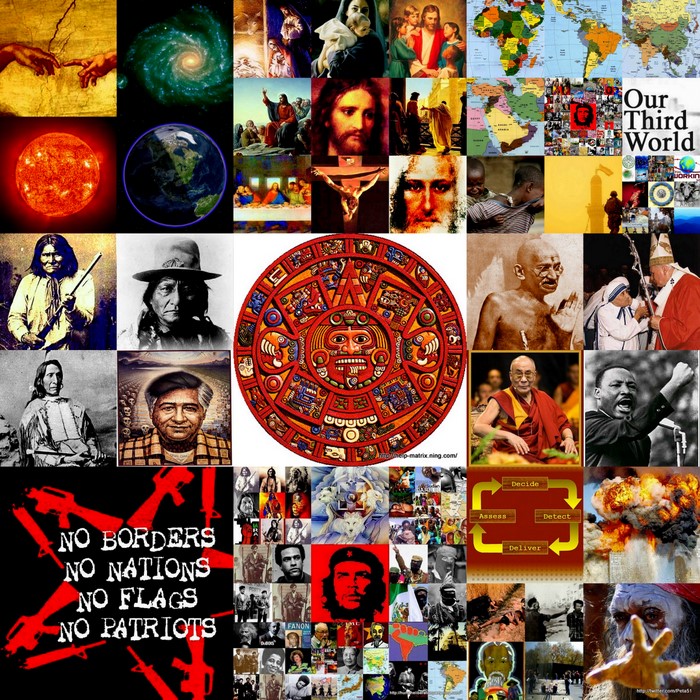By Clare Richardson ~ March 19, 2013
In the early hours of March 20, 2003, an air raid siren and ten-minute round of explosions in Baghdad punctuated the start of the U.S.-led invasion of Iraq. A 13-year-old Iraqi who witnessed the ensuing war, which killed an estimated 176,000 to 189,000 people and forced millions out of the country, would be 23 this year. On the tenth anniversary of the invasion, a generation that grew up amid war now faces a future in a country plagued by political crisis, human rights abuses, and violence.

The stated goal of the invasion was to rid Iraq of its weapons of mass destruction – which never materialized – and topple dictator Saddam Hussein, who turned up in a farmhouse cellar later that year and ultimately was hanged for his role in a massacre of Iraqis in 1982.
The civilian casualty count was grisly, with at least 134,000 Iraqis killed, according to a report from the Costs of War Project by the Watson Institute for International Studies at Brown University. Reuters journalist Daniel Trotta points out that this number does not account for deaths caused indirectly by the war, such as ruined infrastructure and “the mass exodus of doctors” from the country.
Political turmoil was quick to follow. The week U.S. forces withdrew from Iraq, Sunni Vice President Tariq al Hashemi fled the country after authorities put out a warrant for his arrest. Hashemi’s supporters called the terrorism charges against him a power grab by Shiite Prime Minister Nouri al Maliki. Last September, an Iraqi court sentenced Hashemi to death in absentia.
Iraq’s sectarian strife extends to its foreign relations with neighbors like Shia Iran. In a thinly veiled reference to Iran, Hashemi complained of the “growing influence of neighboring countries in our internal affairs.” Before the war, Iraq and Iran balanced each other while vying for regional power in the Persian Gulf. With Iraq destabilized, Iran stepped up to fill the void in the region and exert influence on Iraq’s domestic politics, throwing cold water on U.S. hopes that installing a pro-American government in Iraq would put pressure on Iran. A 2007 CATO Institute report notes that the Bush administration was so concerned with ousting Saddam Hussein that they “largely overlooked the wider geopolitical ramifications of his removal.” (For more on Iraq’s sectarian conflict, read this Council on Foreign Relations report from August 2012.)
Human rights abuses still abound in Iraq, both from armed opposition groups and the government’s subsequent response. According to a March 2013 report by Amnesty International, torture, unfair trials, and ill-treatment of detainees are rife. Women’s rights are in a precarious position. And Human Rights Watch noted in its 2013 World Report that Iraqi leadership used “draconian measures” against journalists, prisoners, protesters, and politicians last year.
A recent uptick in violence also puts the country on wobbly legs. Though the number of deaths is much lower than during the civil war, insurgent attacks and ongoing sectarian violence don’t bode well for the country’s stability.
Such is the state of Iraq, all for a cool $2 trillion (at least $8 billion of which may have been wasted, according to the Special Inspector General for Iraq Reconstruction Stuart Bowen). U.S. spending on projects was often misdirected; as one Iraqi told author and former foreign service officer Peter Van Buren, “It is like I am standing naked in a room with a big hat on my head. Everyone comes in and helps put flowers and ribbons on my hat, but no one seems to notice that I am naked.”
To mark the ten year anniversary, Reuters presents a selection of the most iconic images from our photographers over the course of the war. As a generation of war-scarred Iraqis face their country’s future without U.S. involvement, the number of images reaching an international audience will undoubtedly decline. These photographs serve as a testament to the legacy of the decade of U.S. intervention.
See the full photo gallery with first-person accounts from the photographers here.

PHOTO: U.S. Marine Corp Assaultman Kirk Dalrymple watches as a statue of Iraq’s President Saddam Hussein falls in central Baghdad April 9, 2003. REUTERS/Goran Tomasevic
TOP PHOTO: A group of Iraqi boys gather to watch smoke billowing from burning oil on the outskirts of the town of Baiji, north of Baghdad, March 15, 2005. REUTERS/Sabah Hamid HH/AT/FA
Photographer’s notebook: Iraq war | Analysis & Opinion | Reuters: http://blogs.reuters.com/fullfocus/2013/03/19/photographers-notebook-iraq-war/ ~ Another Amerikan genocide!
++++++++++++++++++++++++++++++++++++++++
HELP-Matrix Humane-Liberation-Party Blog ~ http://help-matrix.blogspot.com/ ~
Humane-Liberation-Party Portal ~ http://help-matrix.ning.com/ ~
@Peta_de_Aztlan Blog ~ http://peta-de-aztlan.blogspot.com/ ~ @Peta_de_Aztlan
+++++++++++++++++++++++++++++++++++++++++


No comments:
Post a Comment
Please keep comments humane!